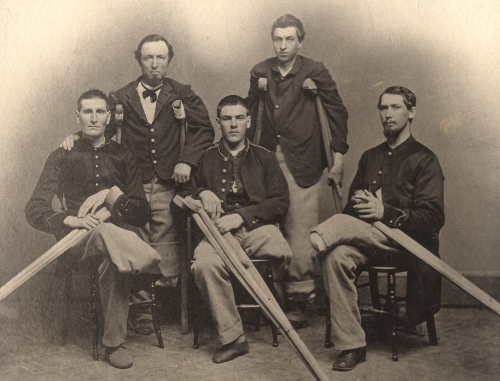
Last year marked the 150th anniversary of the first gunshots of the Civil War -and the first gunshot wounds. As it turns out, the bloodiest war in American history was also one of the most influential in battlefield medicine. Civil War surgeons learned fast, and many of their MacGyver-like solutions have had lasting impact. Here are some of the advances and the people behind them.
Life Saving Amputation: The General who Visited his Leg
The old battlefield technique of trying to save limbs with doses of TLC (aided by wound-cleaning rats and maggots) quickly fell out of favor During the Civil War, even for top officers. The sheer number of injured was too high, and war surgeons quickly discovered the best way to stave deadly infections was to simply lop off the area -quickly.
Among those saved by the saw was Daniel E. Sickles, the eccentric commander of the 3rd Army Corps. In 1863, at the Battle of Gettysburg, the major general's right leg was shattered by a Confederate shell. Within the hour, the leg was amputated just above the knee. His procedure, publicized in the military press, paved the way for many more. Since the new Army Medical Museum in Washington, D.C. had requested battlefield donations, Sickles sent the limb to them in a box labeled "With the compliments of Major General D.E.S." Sickles visited his leg yearly on the anniversary of its emancipation.
[caption id="attachment_59043" align="aligncenter" width="408" caption="Daniel Sickles' leg on display at the the National Museum of Health and Medicine."]
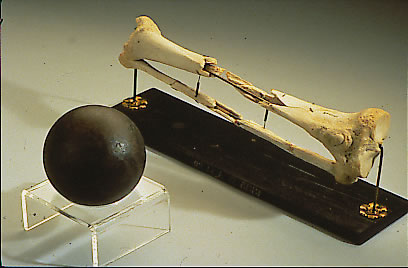 [/caption]
[/caption](Image credit: Wikipedia user Nis Hoff)
Amputation saved more lives than any other wartime medical procedure by instantly turning complex injuries into simple ones. Battlefield surgeons eventually took no longer than six minutes to get each moaning man on the table, apply a handkerchief soaked in chloroform or ether, and make the deep cut. Union surgeons became the most skilled limb hackers in history. Even in deplorable conditions, they lost only about 25 percent of their patients -compared to a 75 percent mortality rate among similarly injured civilians at the time. The techniques invented by wartime surgeons -including cutting as far from the heart as possible and never slicing through joints- became the standard.As for the nutty-sounding behavior of the leg-visiting commander, Sickles can be justifiably accused. In 1859, while serving in Congress, he shot and killed U.S. Attorney Philip Barton Key for sleeping with Sickles' wife. Charged with murder, Sickles became the first person in the United States to be found not guilty by reason of temporary insanity.
The Anesthesia Inhaler: A Knockout Breakthrough
In 1863, Stonewall Jackson's surgeon recommended the removal of his left arm, which had been badly damaged by friendly fire. When a chloroform-soaked cloth was placed over his nose, the Confederate general, in great pain, muttered, "What an infinite blessing," before going limp.
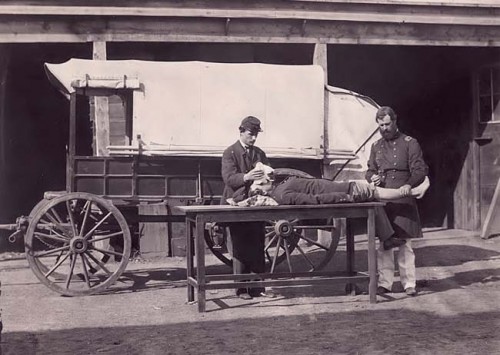
But such blessings were in short supply. The Confederate Army had a tough time securing enough anesthesia because of the Northern blockade. The standard method of soaking a handkerchief with chloroform wasted the liquid as it evaporated. Dr. Julian John Chisholm solved the dilemma by inventing a 2.5 inch inhaler, the first of its type. Chloroform was dripped through a perforated circle on the side onto a sponge in the interior; as the patient inhaled through tubes, the vapors mixed with air. This new method required only one-eighth of an ounce of chloroform, compared to the old two-ounce dose. So while Union surgeons knocked out their patients 80,000 times during the war, rebels treated nearly as many with a fraction of the supplies.
Closing Chest Wounds: The Cub Doctor who Kept Lungs from Collapsing
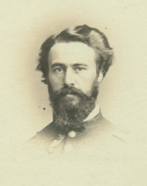 In the early part of the war, Benjamin Howard, a lowly young assistant surgeon, was shuttled to the sidelines with medical grunt work: changing bandages, suturing wounds, and grabbing grub for the docs. But when other surgeons decided there was no point in treating chest wounds, Howard experimented with a new life-saving procedure.
In the early part of the war, Benjamin Howard, a lowly young assistant surgeon, was shuttled to the sidelines with medical grunt work: changing bandages, suturing wounds, and grabbing grub for the docs. But when other surgeons decided there was no point in treating chest wounds, Howard experimented with a new life-saving procedure.At the onset of the war, a sucking chest wound was almost certainly a death sentence. Among French soldiers shot in the chest during the Crimean War (1853-1856), only eight percent survived. The problem, as Howard came to realize, wasn't the wound itself, but the sucking. The negative pressure in the thorax was created by the opening in the chest cavity. The effect often caused the lungs to collapse, leading to suffocation.
The sub doctor found out that if he closed the wound with metal sutures, followed by alternating layers of lint or linen bandages and a few drops of collodion (a syrupy solution that forms an adhesive film when it dries), he could create an airtight seal. Survival rates quadrupled, and Howard's innovation soon became standard treatment.
Facial Reconstruction: The Plastic Surgery Revolution
Carleton Burgan of Maryland was in terrible shape. The 20-year-old private had survived pneumonia, but the mercury pills he took as treatment led to gangrene, which quickly spread from his mouth to his eye and led to the removal of his right cheekbone. He was willing to try anything. In a pioneering series of operations in 1862, a surgeon from City Hospital in New York used dental and facial fixtures to fill in the missing bone until Burgan's face regained its shape.

The doctor was Gurdon Buck, now considered the father of modern plastic surgery. During the war, he and other Union surgeons complete 23 revolutionary "plastic operations" on disfigured soldiers. Buck was the first to photograph the progress of his repairs and the first to make gradual changes over several operations. He also pioneered the use of tiny sutures to minimize scarring.
To some, it seemed pretty wacky, like sci-fi for the 19th century. An Illinois newspaper enthusiastically and erroneously described the new treatments: "Such is the progress of the medical department in these parts that half a man's face demolished by a ball or piece of shell is replaced by a cork face!"
The Ambulance-to-ER System: The End of Drunks and Cowards
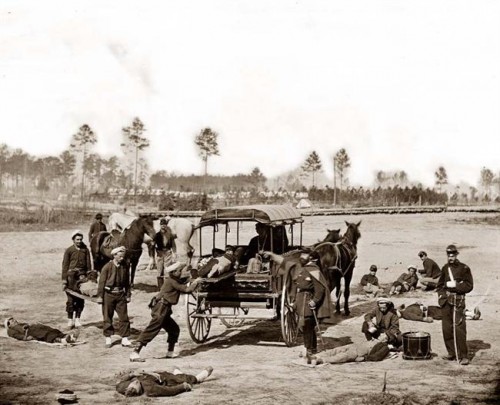
The Union went into the First Battle of Bull Run on July 21, 1861, expecting a mere skirmish. The rebels brought a war. Although 1,011 Union soldiers were wounded, empty ambulances led the retreat to Washington, D.C. Most of the civilian drivers at the time were untrained and "of the lowest character," according to Dr. Henry Ingersoll Bowditch, and activist whose son died after lying for hours following a charge. Many were cowards or drunkards, he added.
It took Jonathon Letterman, the medical director of the Army of the Potomac, just six weeks to implement a brilliant system to evacuate and care for the wounded, becoming the model for ambulance-to-ER system we know today. On September 17, 1862, the Battle of Antietam left 2,108 Union soldiers dead and nearly 10,000 wounded. Letterman established caravans of 50 ambulances, each with a driver and two stretcher bearers, to ferry the injured to field hospitals. He hired private wagons to carry medical supplies to circumvent enemy damage to railroad lines. He even introduced spring suspensions to ambulances and added a lock box under the driver's seat to make it harder for soldiers to steal protein, bedsacks, and morphine reserved for the wounded. The rest is history.
_______________________
 The article above, written by Chip Rowe, is reprinted with permission from the November-December 2011 issue of mental_floss magazine. Get a subscription to mental_floss and never miss an issue!
The article above, written by Chip Rowe, is reprinted with permission from the November-December 2011 issue of mental_floss magazine. Get a subscription to mental_floss and never miss an issue!Be sure to visit mental_floss' website and blog for more fun stuff!





